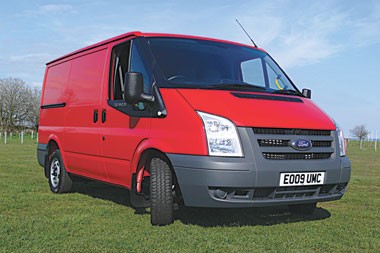Review
What with the new CO2 emissions and fuel economy figures for vans now being available for all to see – a great step forward for one and all in my opinion– click here to see them – my focus has begun turning in this direction to compare how our long-term Transit is bearing up against the predicted norm.
The first thing to note is that at present, apart from bragging about your environmental credentials, there is absolutely no financial reason to run a van with a low CO2 figure.
How long this situation will last is anyone’s guess – now these figures are available I believe the Government will adjust its VED prices to match.
At least they give fleet managers a benchmarking guide.
As for fuel economy, that’s a different matter.
I know that the figures are taken on a rolling road indoors, so that a high-roof van will have the same figure as a low-roof one with better aerodynamics, but at least we can compare like for like.
And looking at the figures, our Transit comes off pretty well.
The comparable van from Vauxhall – the Vivaro SWB CDTi 2.0 115bhp – emits more CO2 at 215g/km (Transit figure: 213g/km) and gives a fuel economy figure of 34.4mpg as against the Transit’s 34.9mpg.
But by glancing at the real-life figure we’ve achieved, you’ll see that we are currently beating the official one at 36.4mpg – pretty pleasing seeing that we aren’t doing anything special like easing off on the right foot and trying extra hard.
In fact, on several occasions we’ve undertaken long motorway hauls with heavy loads on board so that figure is all the more surprising.
As the miles pile on – we’ve done around 3,500 in the van so far – the engine is loosening up nicely and with 115bhp on tap, the Transit never feels short of power.
In fact, we’d have to question whether any panel van on the roads today, run by firms that care about cost-efficiency and the environment, needs more power than this.
The drivers might want it but 115bhp is plenty for any vehicle up to 3.5 tonnes GVW.
















